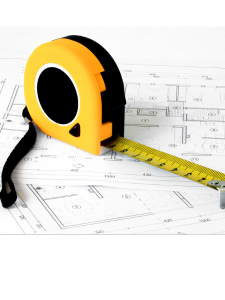✅ 10 Smart Furniture Fixes That Make Moving in a Wheelchair Easier
Easy upgrades that work with how you move—not against it.
1. Make Room to Move
Your home should support your movement, not limit it.
That starts with how your furniture is laid out. Think about your daily routes—from your bed to the bathroom, kitchen to the couch. Are you turning too tightly? Bumping corners?
Try to keep 36 to 48 inches between furniture to allow smooth wheelchair passage. Even shifting a piece a few inches can make a huge difference.
Rounded layouts are often easier than sharp angles, especially when turning or transferring.
A clear layout isn't about being minimal or perfect—it’s about removing friction. Small changes can open up big freedom. The more open the flow, the more confident and relaxed you’ll feel moving through your space.

2. Put It on Wheels
Furniture on wheels turns your space into a flexible zone that adapts to your needs. Coffee tables, nightstands, and kitchen carts with lockable casters give you the freedom to shift things instantly.
Hosting friends? Move a chair. Need room for a transfer? Roll the table aside.
No heavy lifting.
No rearranging the whole room. You stay in control, and your space responds to you. This isn’t just convenient—it’s empowering. You don’t have to work around your home anymore. Now, it works with you.
3. Let Heights Work for You
Adjustable-height furniture is a game-changer. Some days you might need a lower surface to prep food from your chair. Other times, a higher desk helps you organize or type more comfortably.
Having control over height options lets you adapt the space instead of adapting your body.
Desks, tables, kitchen islands, and even bathroom vanities can be built or modified to rise and lower as needed.This reduces strain, improves posture, and cuts down on energy use.
Flexibility like this makes everyday tasks smoother—and a lot more satisfying.
4. Choose Supportive Furniture
Supportive furniture is more than comfort, it’s protection. Think firm cushions that won’t sag, armrests that help with transfers, backrests that help with body positioning, and seat heights that align with your chair.
When I picked furniture that actually worked for my body, I stopped feeling like I was just surviving in my space and started feeling restored by it.
The right piece should feel like a partner—supporting your movement, reducing fatigue, and helping you stay upright and steady, no matter how long the day’s been.
5. Add Smart Tech to Your Setup
Smart furniture doesn’t just look cool—it helps you live better. Recliners that lift with a button.
Adjustable desks that move with an app. Lights and curtains you can control by voice.
These aren’t luxuries—they’re tools for independence. And they give you something you deserve: control over your environment without physical struggle.
Integrating technology into your setup means fewer physical demands, more freedom, and less time spent wrestling with tasks that should be easy.

6. Go Sliding, Not Swinging
Swinging doors eat up valuable space and create turning headaches. Sliding doors, whether barn-style or pocket, move smoothly without blocking your wheels or hitting nearby furniture.
They’re especially helpful in hallways, bathrooms, or bedrooms—anywhere that space is tight and every inch counts.
Sliding doors reduce the need to pivot, back up, or time your movements just right. They open up the space (literally and figuratively) and give you more freedom to flow through your home with ease.
7. Keep It Within Reach

If you're stretching, straining, or constantly asking for help just to grab the basics, something's off.
Keep your most-used items close. Think pull-down shelves, side-opening cabinets, or rolling carts beside your chair.
Put mugs, tools, or chargers where your hand naturally lands—not where they “look good.”
This isn’t about tidiness. It’s about practicality. Less reaching means fewer risks, less frustration, and more independence built right into your setup.
8. Fold It, Tuck It, Love It
Collapsible furniture is like having a backup plan that always fits. Foldable tables, drop-leaf counters, wall-mounted desks—they give you space when you need it, and disappear when you don’t.
Need room to stretch or turn? Fold it away. Ready to eat or work? Pop it back up. No stress, no wasted space.
This kind of adaptability is perfect for smaller homes, shared spaces, or multi-use rooms. Your layout stays flexible, and you stay in control.
9. Storage That Adjusts to You
Flexible storage lets you customize how you organize your stuff. Modular shelves, open bins, labeled baskets, and adjustable heights all help you build systems that work for your reach, routine, and space.
No more bending low or climbing high. Just grab what you need quickly, safely, and without extra steps.
This isn’t about decluttering for the sake of minimalism—it’s about creating an environment that removes friction and keeps your energy focused on what matters.
10. Don’t Slip—Secure Your Surfaces
Slick floors and loose rugs can turn your space into a hazard zone. Non-slip mats, textured vinyl, rubber flooring, and grip strips can all give your wheels (and feet) the traction they need.
Bathrooms and kitchens especially benefit from good floor grip. So do thresholds and entryways. You’ll move with more confidence when you know the ground beneath you isn’t going to betray your balance.
Safety doesn't have to be boring—it just has to work. And it should work for you.